
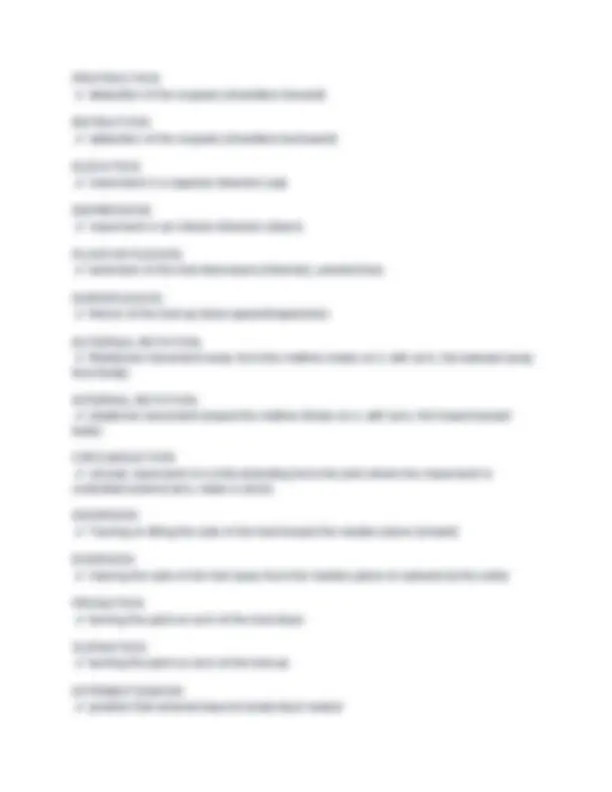
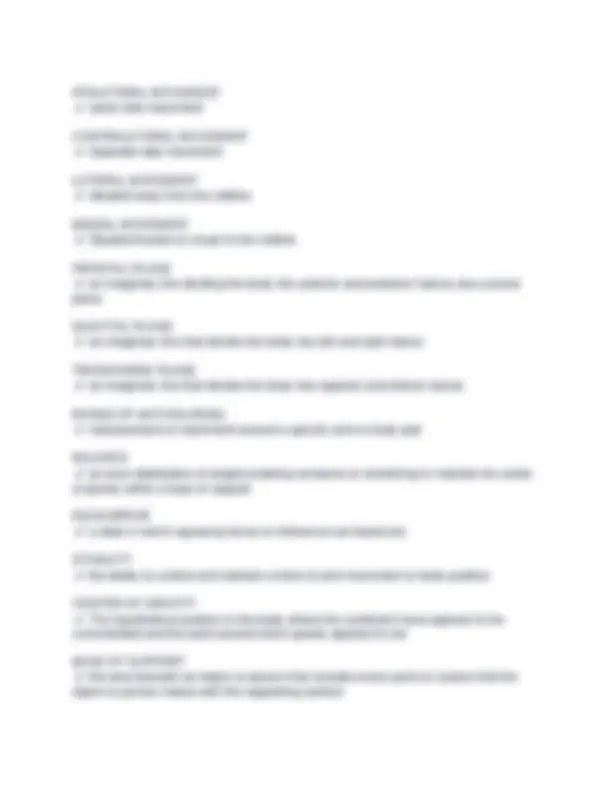
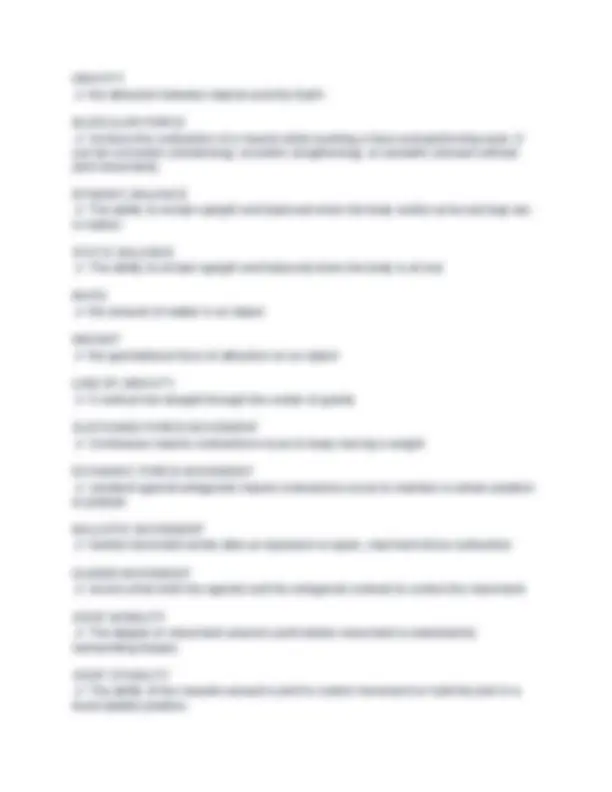
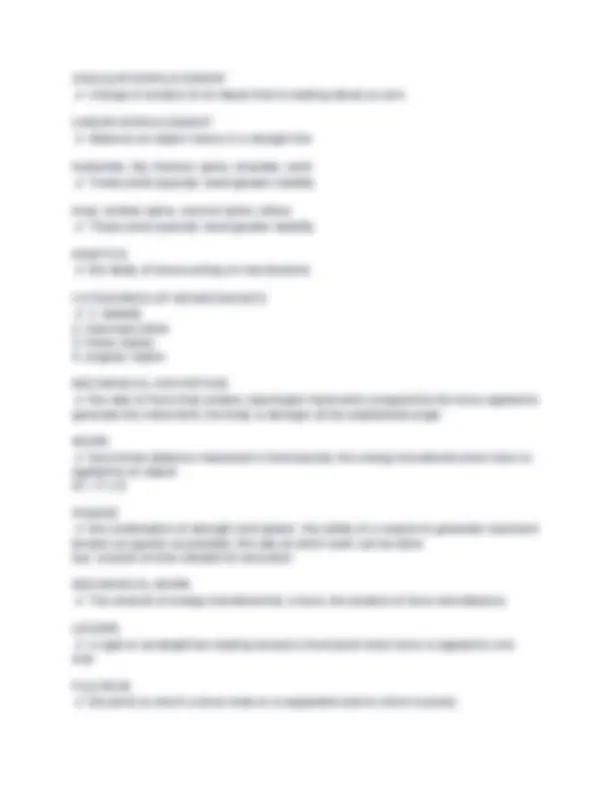
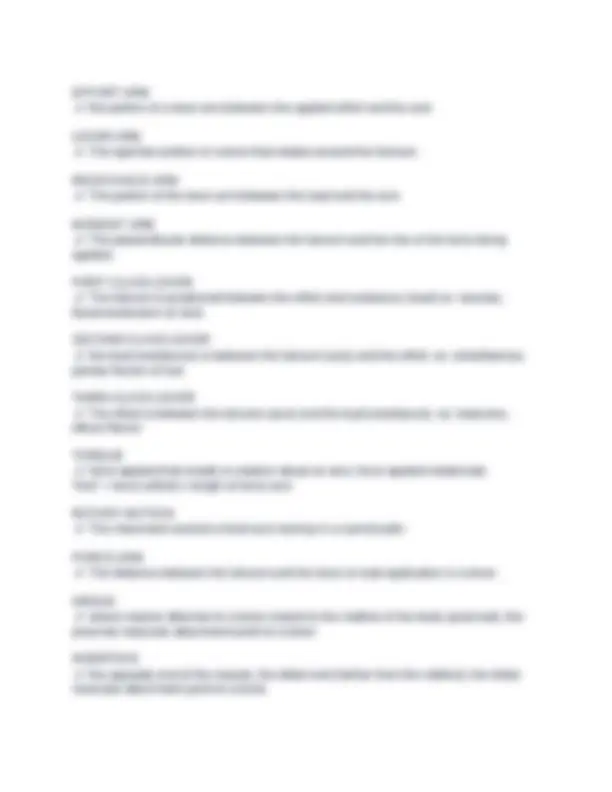
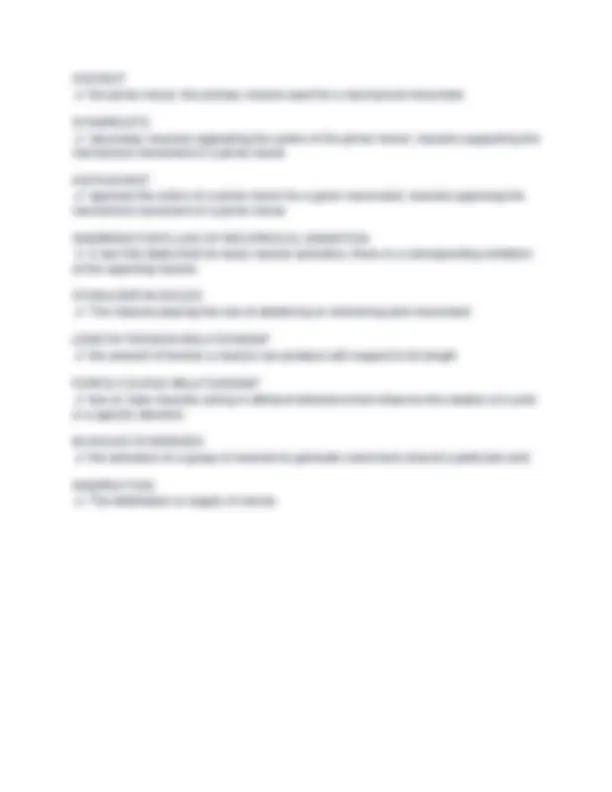


Study with the several resources on Docsity

Earn points by helping other students or get them with a premium plan


Prepare for your exams
Study with the several resources on Docsity

Earn points to download
Earn points by helping other students or get them with a premium plan
Community
Ask the community for help and clear up your study doubts
Discover the best universities in your country according to Docsity users
Free resources
Download our free guides on studying techniques, anxiety management strategies, and thesis advice from Docsity tutors
ISSA CPT Module 5 Questions with Answers latest 2025
Typology: Exams
1 / 10

This page cannot be seen from the preview
Don't miss anything!







✔ the study of the mechanical laws governing the movement or structure of living organisms. KINESIOLOGY ✔ The study of the mechanics of human movement. ANATOMICAL POSITION ✔ The anatomically neutral body position facing forward with the arms at the sides of the body and palms and toes pointing straight ahead. ANTERIOR OR VENTRAL ✔ front of the body or toward the front relative to another reference point POSTERIOR OR DORSAL ✔ back of the body or toward the back relative to another reference point SUPERIOR ✔ above a reference point INFERIOR ✔ below a reference point PROXIMAL ✔ position closer to the center of the body relative to a reference point DISTAL ✔ position farther from the reference point MEDIAL ✔ position relatively closer to the midline of the body LATERAL ✔ position relatively farther from the midline of the body PRONE ✔ lying facedown SUPINE
✔ lying on one's back DEEP ✔ further beneath the surface relative to another reference point SUPERFICIAL ✔ closer to the surface relative to another reference point UILATERAL ✔ refers to only one side BILATERAL ✔ refers to both sides IPSILATERAL ✔ on the same side CONTRALATERAL ✔ on the opposite side CAUDAL ✔ toward the bottom CEPHALIC ✔ toward the head VOLAR ✔ relating to the palm of the hand or sole of the foot ABDUCTION ✔ Movement away from the midline of the body ADDUCTION ✔ Movement toward the midline of the body FLEXION ✔ Decreases the angle of two body parts EXTENSION ✔ increases the angle of two body parts LATERAL FLEXION ✔ flexion (decreasing angle of two body parts) in the frontal plane; "side-bending"
✔ same side movement CONTRALATERAL MOVEMENT ✔ Opposite-side movement LATERAL MOVEMENT ✔ situated away from the midline MEDIAL MOVEMENT ✔ Situated toward or closer to the midline FRONTAL PLANE ✔ an imaginary line dividing the body into anterior and posterior halves; aka coronal plane SAGITTAL PLANE ✔ an imaginary line that divides the body into left and right halves TRANSVERSE PLANE ✔ an imaginary line that divides the body into superior and inferior halves RANGE OF MOTION (ROM) ✔ measurement of movement around a specific joint or body part BALANCE ✔ an even distribution of weight enabling someone or something to maintain its center of gravity within a base of support EQUILIBRIUM ✔ a state in which opposing forces or influences are balanced. STABILITY ✔ the ability to control and maintain control of joint movement or body position CENTER OF GRAVITY ✔ The hypothetical position in the body where the combined mass appears to be concentrated and the point around which gravity appears to act BASE OF SUPPORT ✔ the area beneath an object or person that includes every point of contact that the object or person makes with the supporting surface
✔ the attraction between objects and the Earth MUSCULAR FORCE ✔ Involves the contraction of a muscle while exerting a force and performing work. It can be concentric (shortening), eccentric (lengthening), or isometric (tension without joint movement). DYNAMIC BALANCE ✔ The ability to remain upright and balanced when the body and/or arms and legs are in motion. STATIC BALANCE ✔ The ability to remain upright and balanced when the body is at rest MASS ✔ the amount of matter in an object WEIGHT ✔ the gravitational force of attraction on an object LINE OF GRAVITY ✔ A vertical line straight through the center of gravity SUSTAINED FORCE MOVEMENT ✔ Continuous muscle contractions occur to keep moving a weight DYANAMIC FORCE MOVEMENT ✔ constant agonist-antagonist muscle contractions occur to maintain a certain position or posture BALLISTIC MOVEMENT ✔ inertial movement exists after an explosive or quick, maximum-force contraction GUIDED MOVEMENT ✔ occurs when both the agonist and the antagonist contract to control the movement JOINT MOBILITY ✔ The degree of movement around a joint before movement is restricted by surrounding tissues. JOINT STABILITY ✔ The ability of the muscles around a joint to control movement or hold the joint in a fixed (stable) position.
✔ the quantity of motion of a moving body, measured as a product of its mass and velocity momentum = mass x velocity SPEED ✔ The ability to move the body in one intended direction as fast as possible. GROUND REACTION FORCE (GRF) ✔ The force the ground exerts on a body it is in contact with. FRICTION ✔ the resistance that one surface or object encounters when moving over another. COMPRESSION FORCE ✔ The force of two surfaces pressing toward one another. TENSILE FORCE ✔ The force when two surfaces pull apart from one another. SHEAR FORCE ✔ the force of two surfaces moving across one another MUSCULAR CONTRACTION ✔ The shortening or resistance to lengthening of a muscle fiber. LINEAR MOTION ✔ Movement along a line, straight or curved. ANGULAR MOTION ✔ rotation around an axis AXIS ✔ point of rotation around which a lever moves DISPLACEMENT ✔ the distance an object is moved (or displaced) from its starting point or location baseball: home to first = 90 ft ; home to first back to home = 0 ft DISTANCE ✔ the total or sum of the length an object travels baseball: home to first = 90 ft ; home to first back to home = 180 ft
✔ change in location of an object that is rotating about an axis LINEAR DISPLACEMENT ✔ distance an object moves in a straight line foot/ankle, hip, thoracic spine, shoulder, wrist ✔ These joints typically need greater mobility knee, lumbar spine, cervical spine, elbow ✔ These joints typically need greater stability KINETICS ✔ the study of forces acting on mechanisms CATEGORIES OF BIOMECHANICS ✔ 1. stability
✔ the prime mover; the primary muscle used for a mechanical movement SYNERGISTS ✔ secondary muscles supporting the action of the prime mover; muscles supporting the mechanical movement of a prime mover ANTAGONIST ✔ opposes the action of a prime mover for a given movement; muscles opposing the mechanical movement of a prime mover SHERRINGTON'S LAW OF RECIPROCAL INHIBITION ✔ A law that states that for every muscle activation, there is a corresponding inhibition of the opposing muscle. STABILIZER MUSCLES ✔ The muscles playing the role of stabilizing or minimizing joint movement. LENGTH-TENSION RELATIONSHIP ✔ the amount of tension a muscle can produce with respect to its length FORCE-COUPLE RELATIONSHIP ✔ two or more muscles acting in different directions that influence the rotation of a joint in a specific direction MUSCLES SYNERGIES ✔ the activation of a group of muscles to generate movement around a particular joint INNERVATION ✔ The distribution or supply of nerves